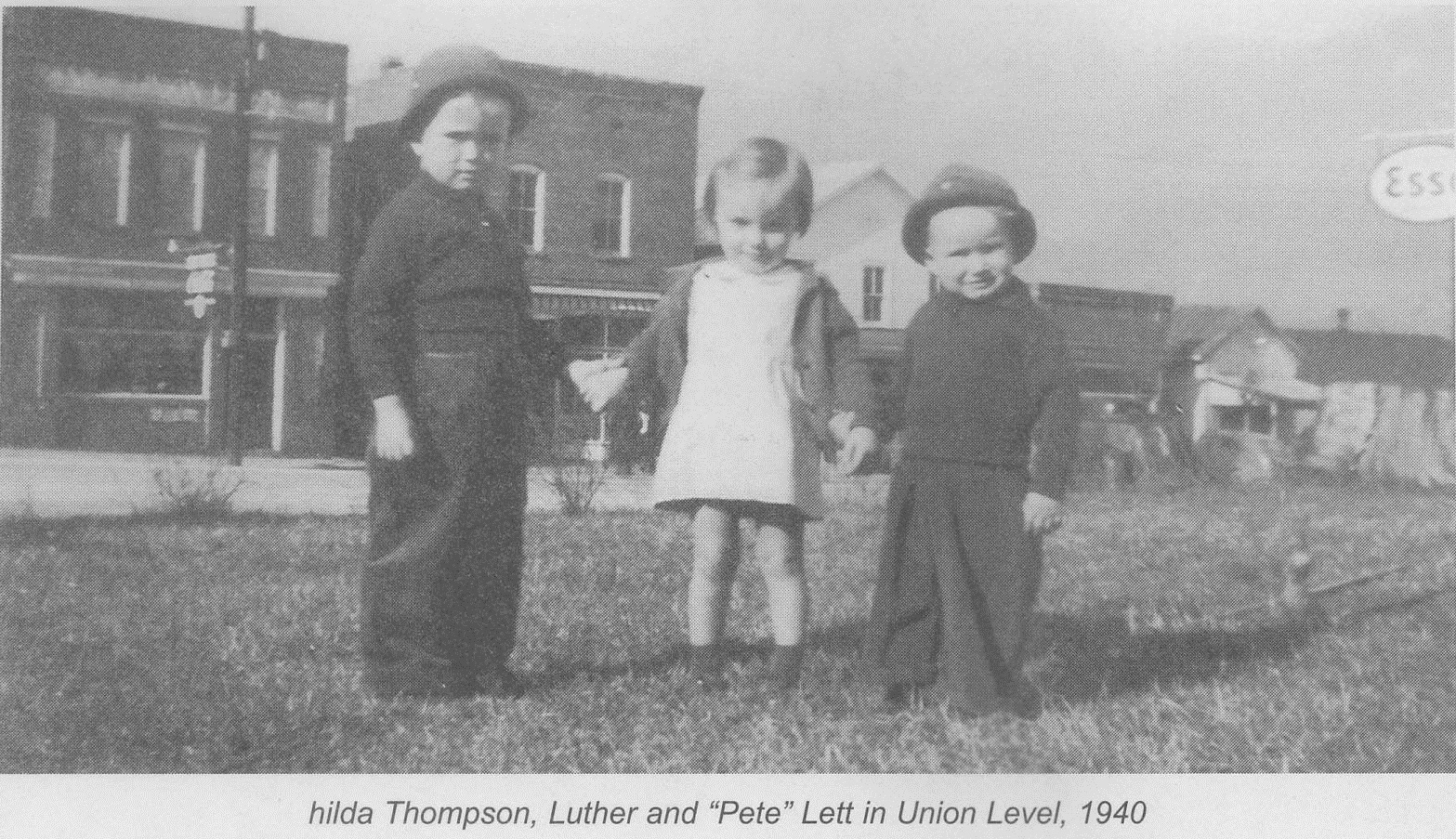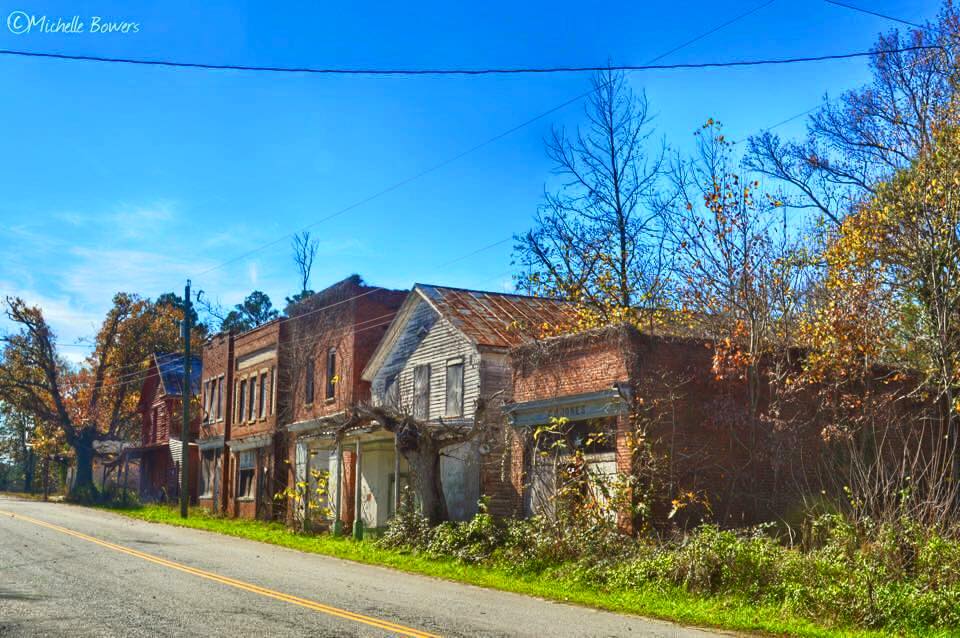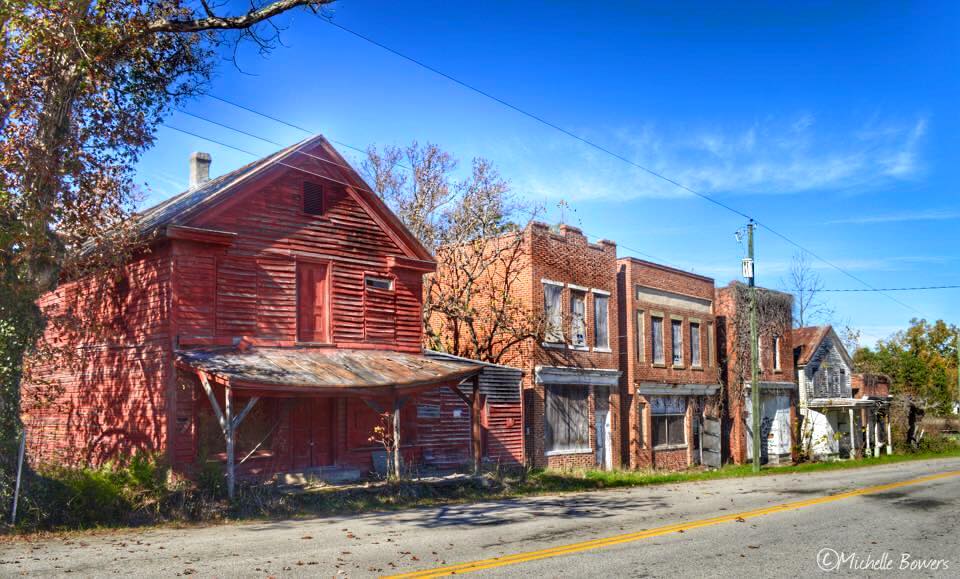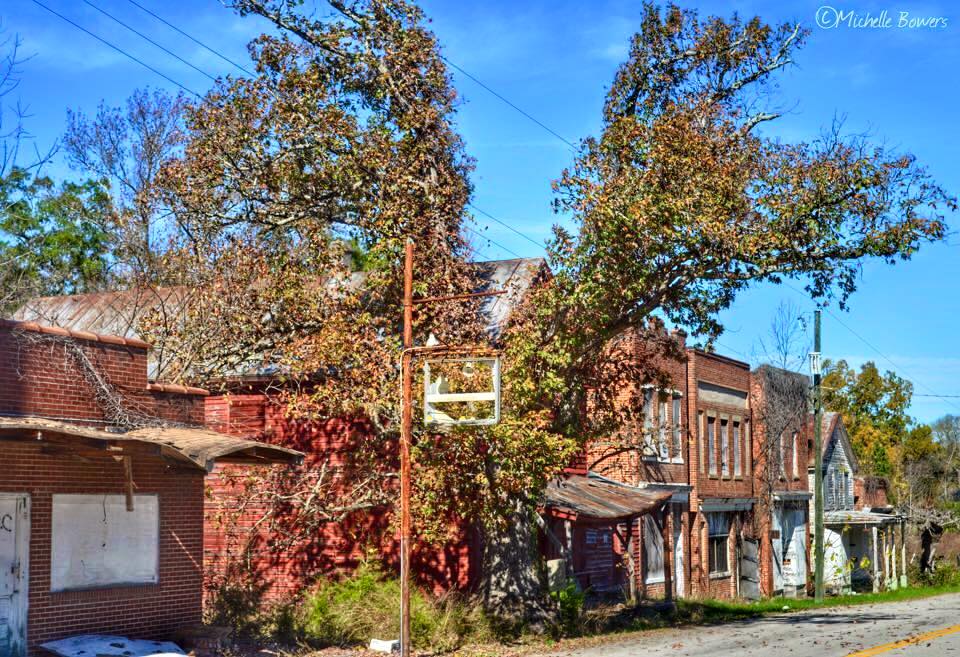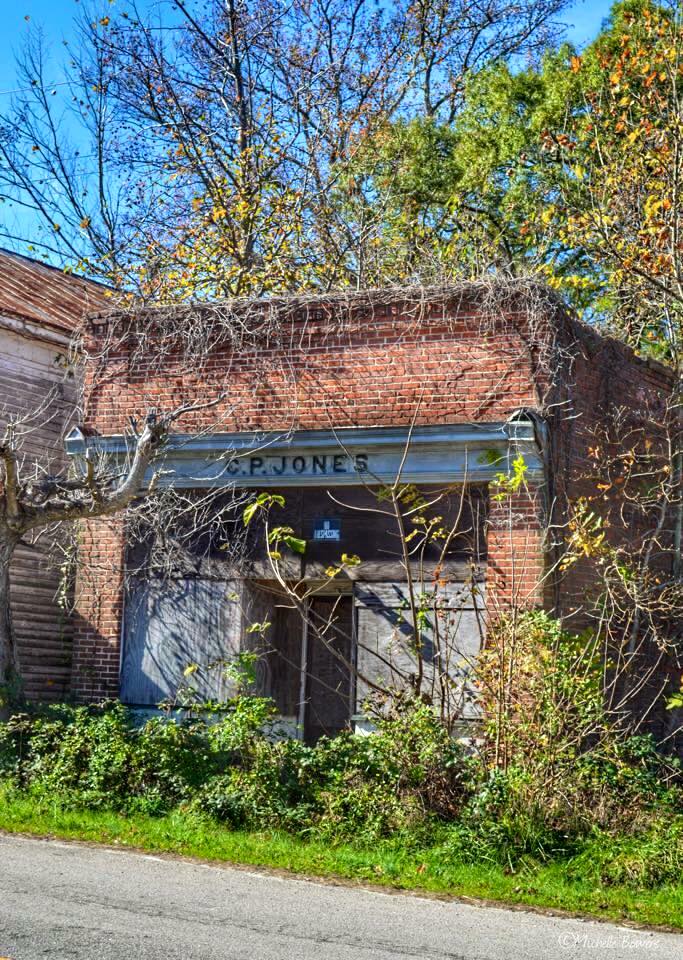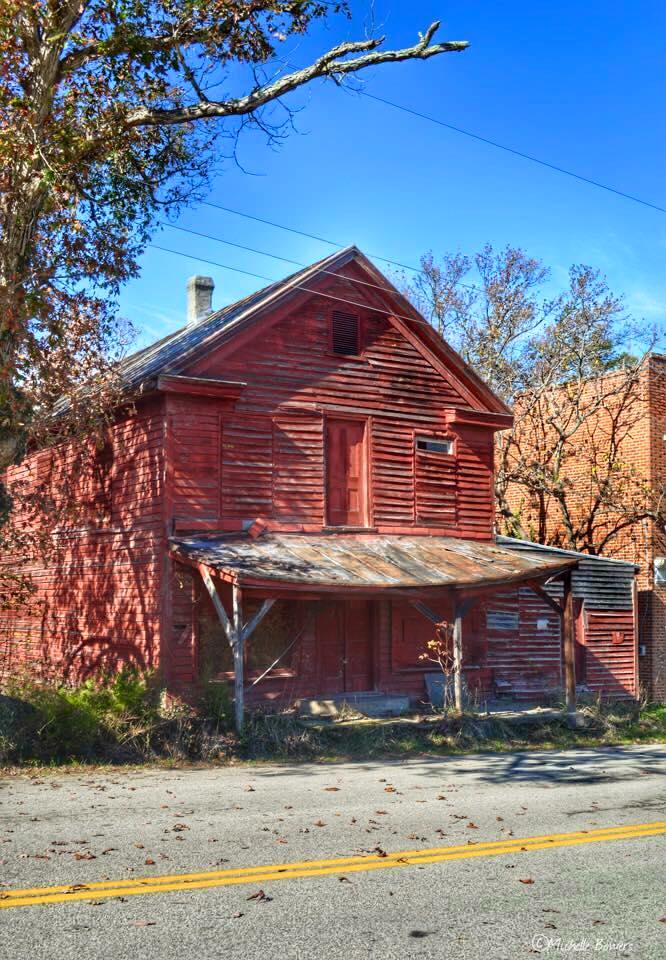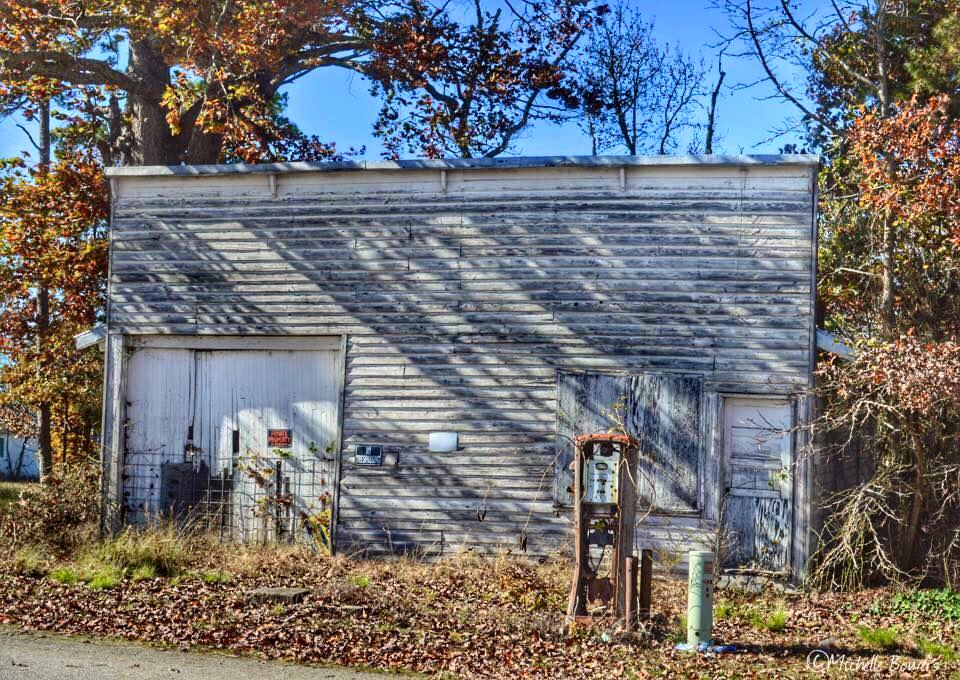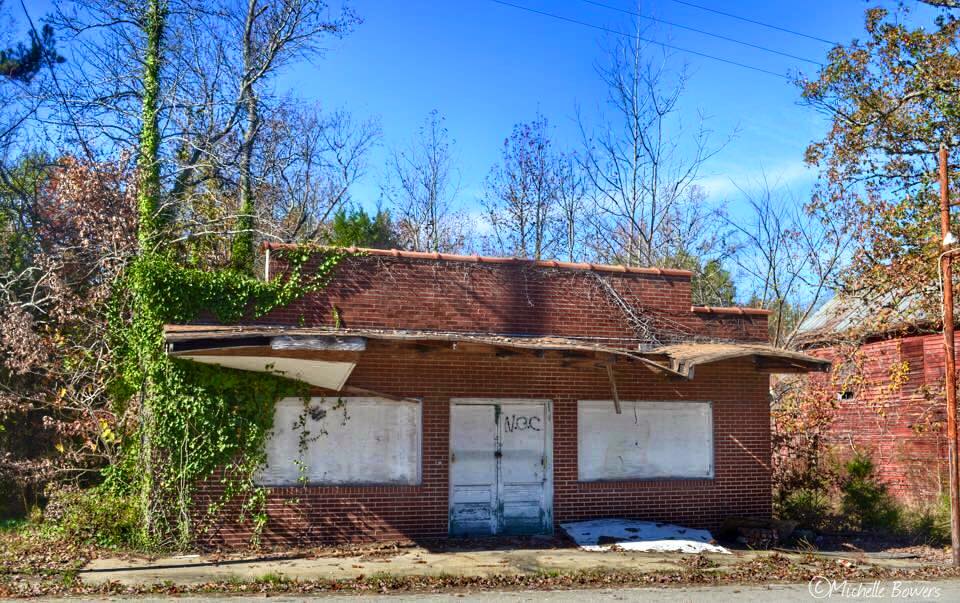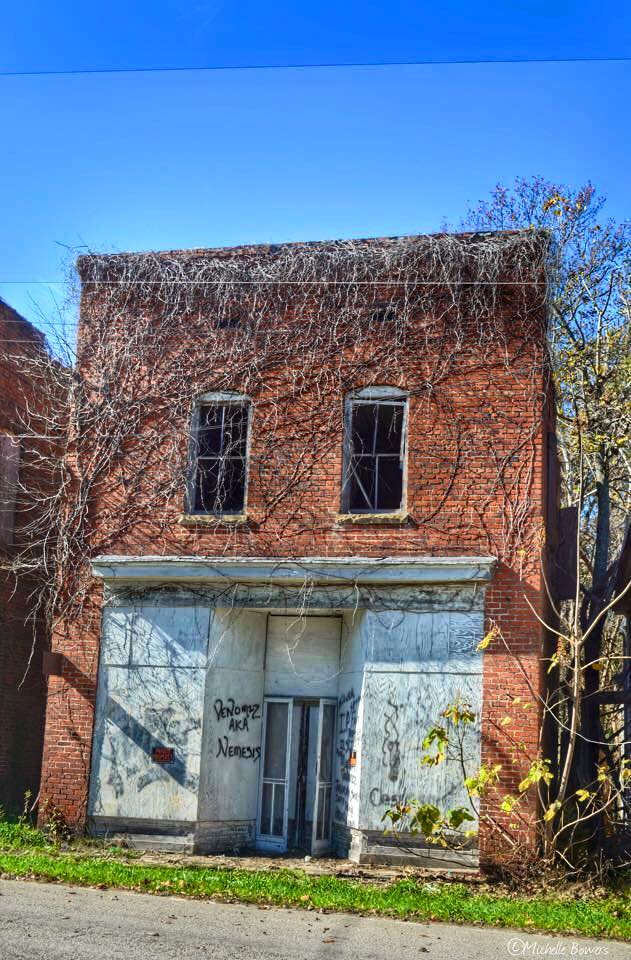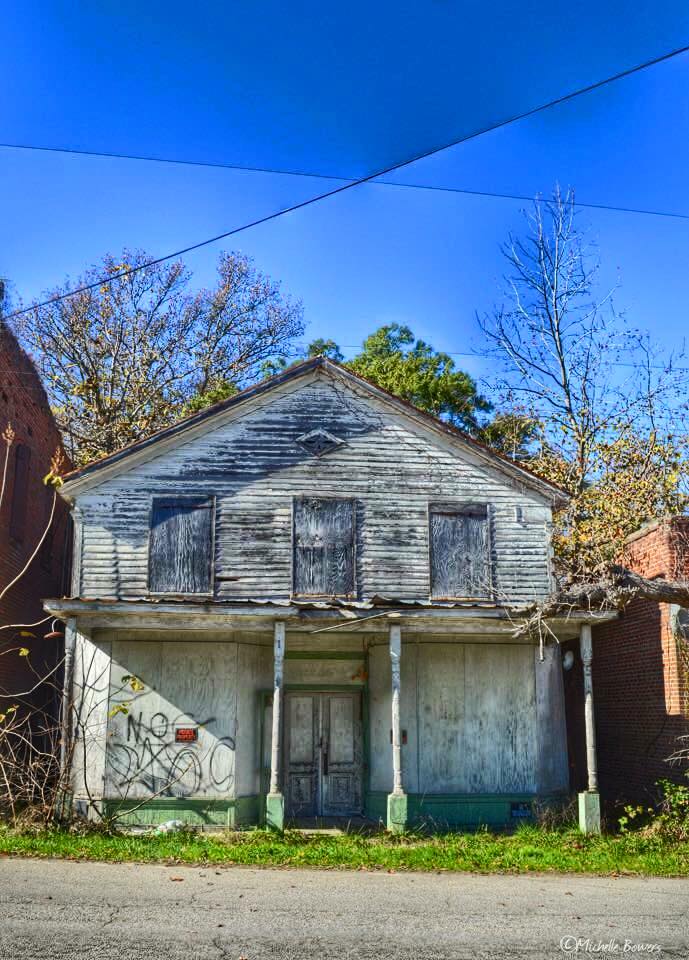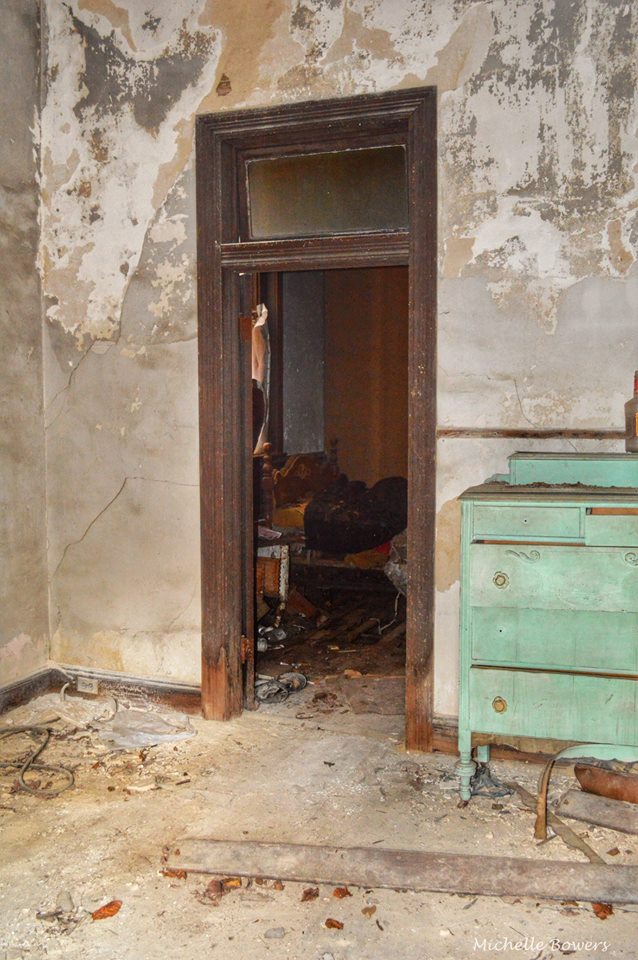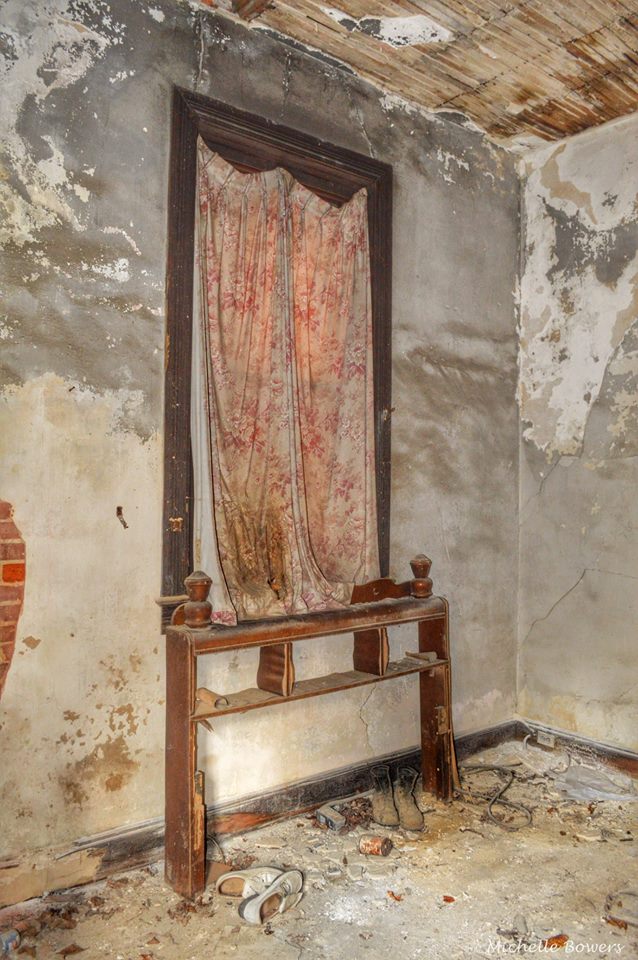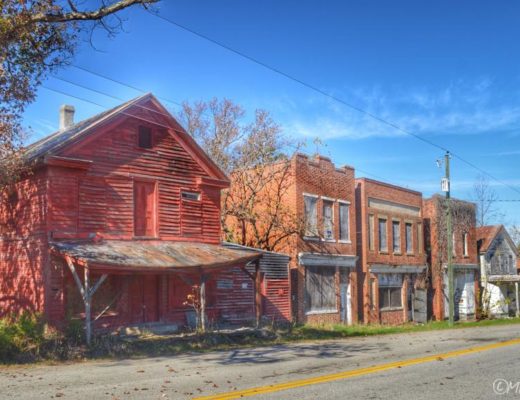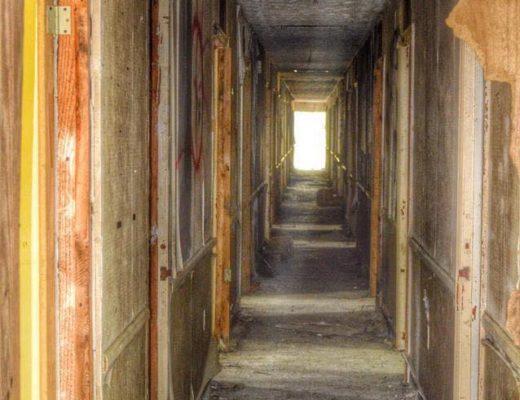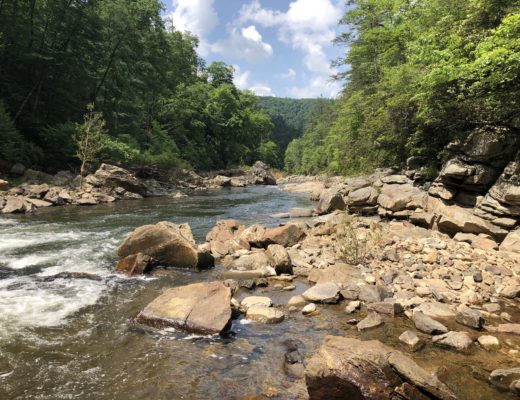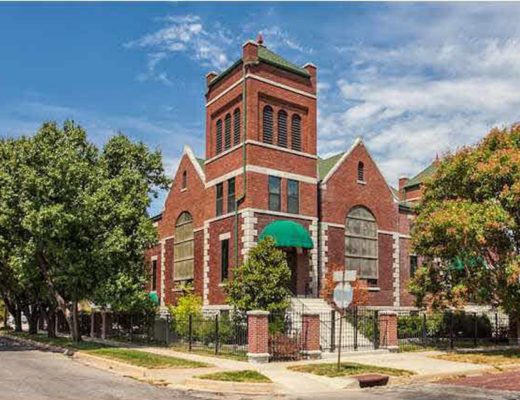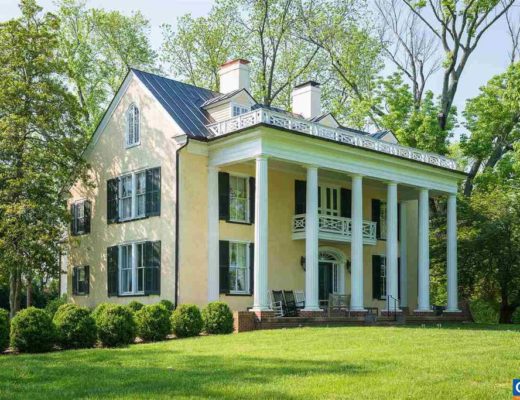I have long been fascinated by the Virginia ghost town of Union Level. I first visited it several years ago and spent many hours scouring the internet trying to find old pictures of the town or really anything about life in the town. So imagine my surprise when my friend, Mark Pace, at the Richard H. Thornton Library in Granville County, NC sent me a picture of Union Level from 1940! Not only that, but an article written by one of the children shown in the picture (written when she was an adult), about life in Union Level.
He scanned the image and the accompanying text and sent it to me. But the text isn’t looking right as an image. So I am going to type it out as it was sent to me. This is really special as I have spent years searching for something like this and never found a thing. He found this from, ‘The Heritage of Mecklenburg County, Virginia 1765-2006’. The text states at the bottom, Submitted by Hilda Thompson Hood, Jacksonville, NC. Sources: Personal knowledge. Research paper handwritten by Robert Harrison. Roanoke Times and World-News. Sunday, June 18, 1989 article titled “Union Level recalls prosperous times.”
Union Level Remembered
Union Level, Virginia was still a busy little town in the center of Mecklenburg County in the 1940’s and 1950’s when I was growing up. Situated in a rural farming area, the town early (sic) received its supplies via the Southern Railroad that ran through town. The chief money crop was tobacco, with some income also derived from cattle, hogs and chickens. It was where the farmers came in horse-drawn wagons and cars on Saturday to purchase their supplies for the next week. In addition to general merchandise, they could also go to the drug store or post office and could purchase gasoline for their vehicles.
My maternal grandfather, Luther W. Lett, owned and operated a General Merchandise Store where the farmers shopped and could fill their automobile tanks with Esso (today’s Exxon) gasoline. My mother, Iverna Lett Thompson, worked there from 1929 (age 14) until 1952. My mother acquired the store in the late 1940’s. After 1952, this building was rented to and operated by Clarence Thompson as a general merchandise store. On its left was the home where my family lived until I was 8 years old (1946). On the left side of my family’s home was a two-store building known as the “Ross” house that at one time had been a boarding house, but which I knew as the residence of John Bailey and Irma Ingram. On the right side of my maternal grandfather’s store was a two story building that my paternal grandmother, Theresa (Dooley) Thompson, had operated before and during the Great Depression as a general merchandise store but which, during my childhood, was used only for storage.
Some of the other facilities or store owners I recall in Union Level are shown in the above photograph of me standing in our front lawn with my two first cousins, Charles “Pete” and Luther “Piggy” Lett, taken about 1940. In the background, from left to right, are the stores owned or operated by Robert Williams (this building was earlier the Bank of Union Level), A.F. Drumwright, Ashby Thompson, and C. P. Jones. Mr Lock was living in the next building shown in the photograph and later perished when it burned. To the right of this building is shown the railroad depot. Archie Ferguson’s store, Peter Bennett’s place, and a garage that I recall containing an old motorcycle and parts are not shown in this photograph as they are to the left of it. The post office, also not shown, is located along the railroad track across the street from the depot.
Union Level’s first post office was operated by T. P. House. It began at an earlier time as a room in his home situated north of the Southern Railroad depot, but a few years later Mr. House built an office in front of his home and along the railroad track by the main road. The mail was delivered from Boydton to Lawrenceville by a carrier. Later postmasters were Matt Smith, Irene Ogburne, W. H. Simmons, E. L. Petty, Agnes P. Gordon, and William “Bill” Edwards. As a young girl, I remember Jim and Agnes Gordon working in the Union Level post office by the railroad track, and later, Bill Edwards working in the post office relocated across the road from my family’s house. One of the last people I recall working there was Annie Moore. I also recall that my uncle, Kenneth W. Thompson Sr., was a long time mail carrier in the area.
As a young girl attending Zion Methodist Church, I recall Reverend Jack B. Taylor and his successor, Reverend L. D. Stables. I also recall Reverend William T. Kessler who later performed my wedding ceremony there June 4th, 1961. The superintendent of Sunday Schools was J. Wes Jones Jr.
Buckhorn School was located about two miles from downtown Union Level, across the street from Sam Well’s store where students often bought candy and soda after lunch. It was a school for grades one through eleven. The principals at Buckhorn were Messrs Claton, Maxwell, Harding, Baker, Mrs. Hubbard, and Miss Thelma Petty. I attended Buckhorn School from 1944 to 1954 and my principal was Mrs. Hubbard, who also taught me algebra. Some of my other teachers there were Frances Estes, Mamie Stone, Willie Creedle, Mildred Jones, Elizabeth Stumps, Thelma Petty, Sarah Ingram, Evelyn Williams, Anne Gwaltney, and Mr. Kinkaid. Mrs Edmonson taught me piano.
Founded in 1840’s as a way station for wagons and stagecoaches, Union Level had more businesses than South Hill in the 1860’s. It had as many as 20 businesses from 1920-1940. These included four general stores, two barber shops, a bank, a pharmacy, three garages, a boarding house, and a motorcycle dealership. At the depot, one could board the train in Union Level and ride to major cities like Atlanta. Parking spaces were hard to find downtown on Saturdays because of the many businesses.
Today the memory of the thriving little village I recall from the 1940’s and 1950’s is just a fond memory. Residents say that the town’s economic decline came after the Civil War when landowners would not sell property for tobacco warehouses, forcing tobacco sellers to establish their market in South Hill. Efforts to purchase land in Union Level for other businesses, including a textile mill and even a funeral home, were similarly futile. The bank and several other businesses closed in the wake of the Depression of 1929 and the 1930’s. The drug store and two general merchandise stores closed in the 1970’s. The train stopped running through Union Level by the mid-1980’s and the depot was torn down. The U.S. Postal Service closed the post office in the 1990’s and the address for local residents changed to South Hill. With the decline of the railroad, the switch to supermarkets as a result of automobiles and improved roads, and the decline in small family farming profits, there is no railroad and no operating stores, post office, local school or business establishments in Union Level today.
I do want to put out a disclaimer. It is a very neat day trip and great picture taking opportunities abound. But these buildings are owned. It is my understanding an elderly lady owns the majority of them. I would hate for her to be harassed or for her to stress over worrying about people entering them. I have also heard that one of the buildings is being restored and they will sell flea market type items.

